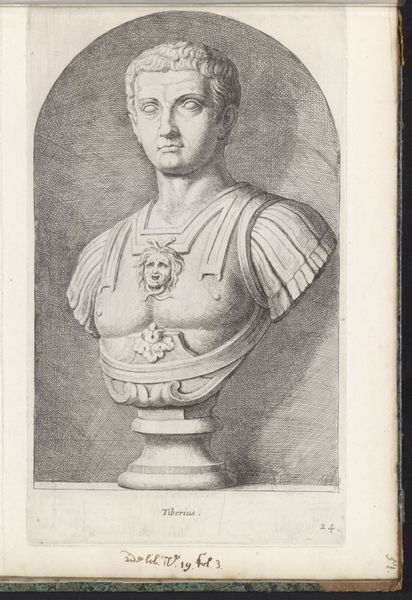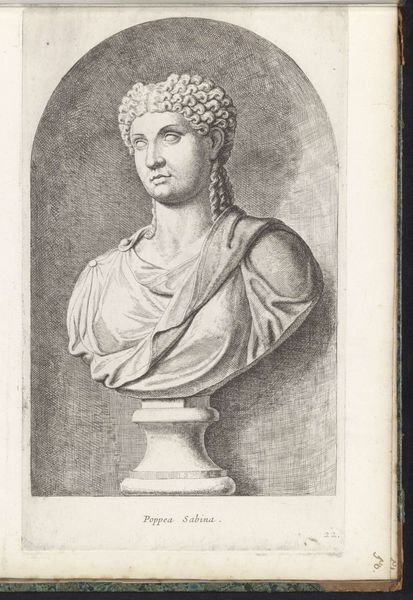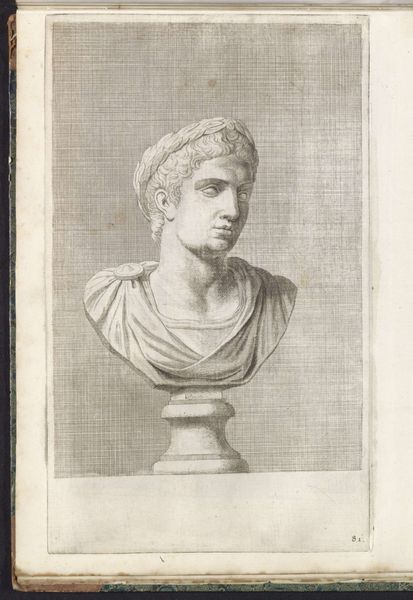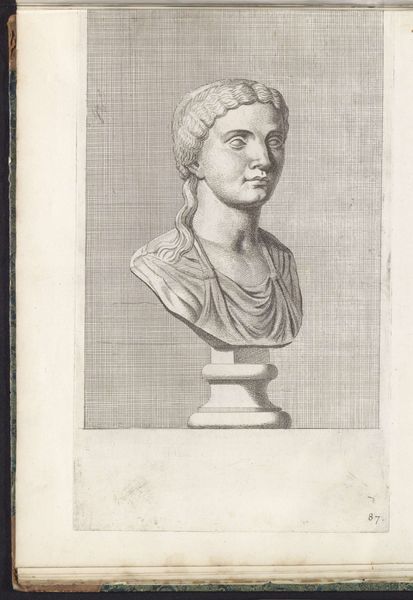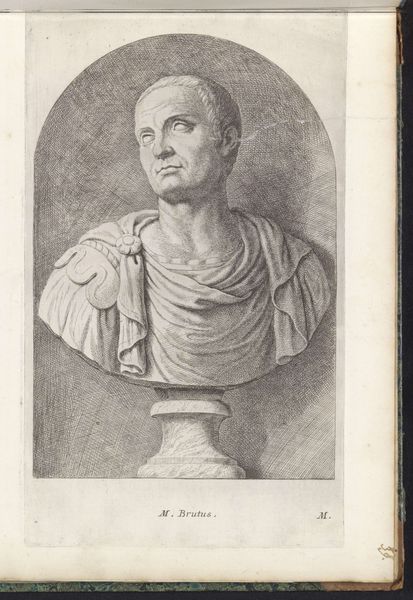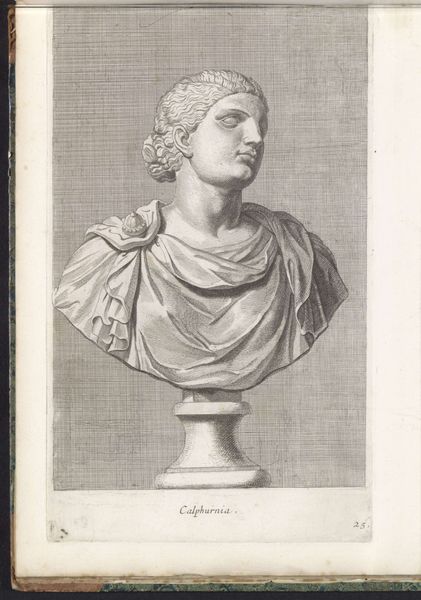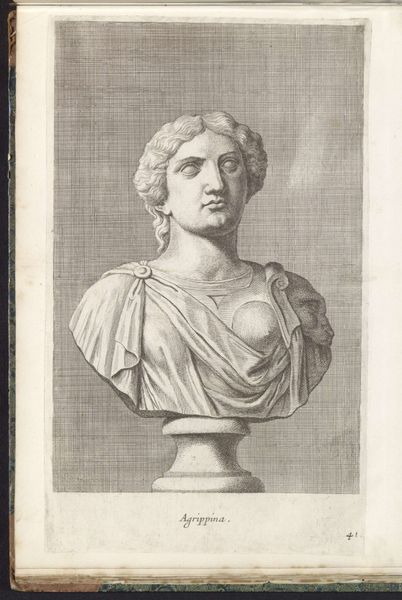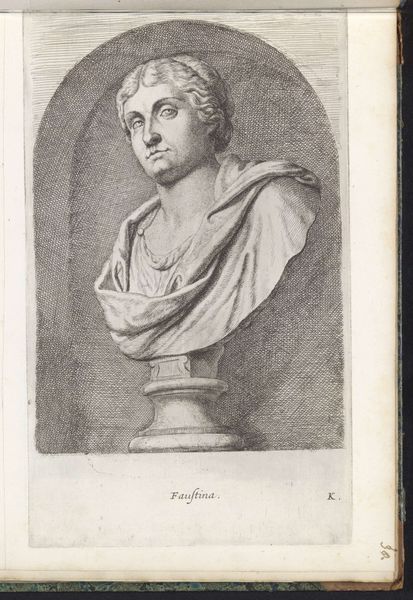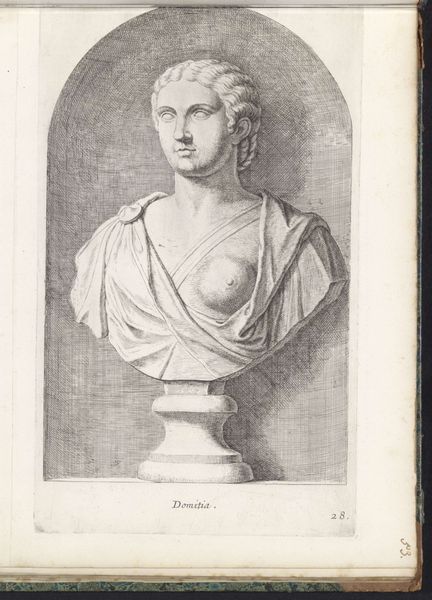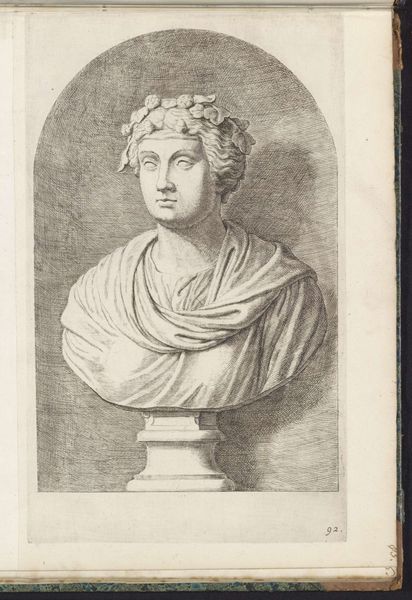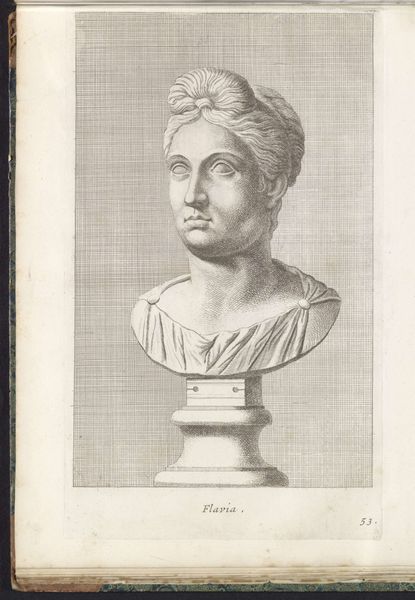
drawing, engraving
#
portrait
#
drawing
#
baroque
#
classical-realism
#
pencil drawing
#
ancient-mediterranean
#
history-painting
#
engraving
Dimensions: height 325 mm, width 195 mm
Copyright: Rijks Museum: Open Domain
Curator: This work is a depiction of a bust of Emperor Augustus, dating back to the period of 1646 to 1670, by Hubert Quellinus. We find it among the collection of the Rijksmuseum. Editor: My goodness, he looks ever so slightly displeased, doesn’t he? The rigid posture, combined with what appears to be armor, creates an air of formidable power...but also of a certain… stuffiness? Curator: Note the artist's adept use of engraving to render the texture and detail. The tonal range achieved through the cross-hatching meticulously sculpts the form, giving a tactile quality to the image. Formally speaking, the circular frame subtly reinforces the classical bust form. Editor: Tactile indeed! It’s like looking at a stoic, sculpted onion! All those tightly controlled lines sort of cage him. And you can almost sense the artist's effort to communicate strength—but I see the rigidity instead, almost like he’s a powerful person burdened by expectations and the weight of ruling. Curator: Indeed, this artwork is very rooted in history. The portrait aligns stylistically with both Baroque and Classical Realism, evident in the dignified portrayal of a historical figure rendered with detailed attention and idealized features. We see art history movements spanning centuries synthesized. Editor: Do you think the choice of the Baroque, then, serves as more than just an art-historical moment? Surely the dramatic flair amps up the spectacle of Imperial grandeur— almost…manufactured. This all reminds me of the grandiosity surrounding royalty. A true production. Curator: Precisely, the fusion reflects an interest in antiquity during the 17th century. It serves as a cultural commentary on power, borrowing aesthetic vocabularies to negotiate concepts of authority and representation. Editor: Right. I love how something as visually austere can also be ripe with such intriguing paradoxes about power. Now, when you see this piece in the Rijksmuseum, perhaps think: Augustus as Onion, layer upon layer… Curator: An interpretation both insightful and uniquely you. Indeed, let's consider how form and context dynamically shape our encounter with it and history, and thus art.
Comments
No comments
Be the first to comment and join the conversation on the ultimate creative platform.
